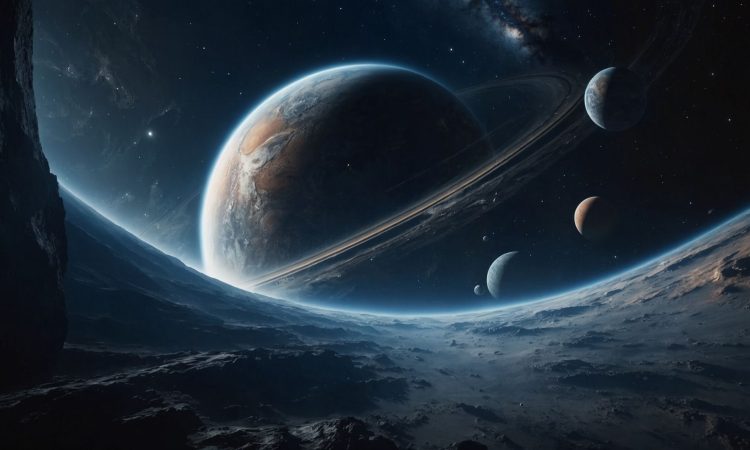
Astronomers have discovered a distant planet that has given them an idea of what Earth might look like 8 billion years from now.
The planet, called KMT-2020-BLG-0414 and located 4,000 light-years from Earth, is a rocky world orbiting a white dwarf, the glowing remains of a star. it is expected to turn into a white dwarf in about 5 billion years.
Before that, however, the Sun will first enter a red giant phase, expanding and consuming the planets Mercury, Venus, and possibly even Earth and Mars. If our planet escapes, it may eventually resemble this distant planet, drifting away from the cool remains of the dying cosmic furnace.
The researchers described this distant world in the journal .
What might Earth look like in 8 billion years?
“We currently do not have a consensus on whether the Earth will be able to avoid being swallowed by the red giant in 6 billion years,” said Keming Zhang, lead author of the study and an astronomer at the University of California, San Diego (USA).
“In any case, planet Earth will only be habitable for about another billion years, by which time Earth’s oceans would be vaporized by accelerated greenhouse effect; long before the risk of being swallowed by the red giant becomes relevant”, says the researcher, .
Stars, during their lifetime, obtain their energy by fusing hydrogen into helium. Once it exhausts its supply of hydrogen, it begins to fuse helium, leading to a massive increase in the energy produced, causing the star to expand to hundreds or even thousands of times its original size, engulfing any nearby planets as it turns into -a red giant.
The distant planetary system lies near the bulge at the center of our galaxy, , and was first spotted by astronomers in 2020 when it positioned itself in front of the light of an even more distant star located 25,000 light-years away.
What will happen to humans when Earth is no longer habitable?
Because gravity distorts space, the system bent the light of the distant star, acting as a “gravitational lens” and making its presence detectable. Once they spotted the star, astronomers also identified the planet, which is twice the size of Earth and orbits the white dwarf at a distance of one to two times Earth’s distance from the Sun. The system also contains a gray dwarf (a star that failed to ignite) with a mass about 17 times that of Jupiter.
What will happen to humanity in the distant future are currently unanswered questions. Scientists don’t know if life can survive the Sun’s red giant phase, or if humans could ever prevent the warming that will boil the oceans for the next billion years. However, Zhang speculated that humans could one day migrate to the icy moons Europa and Enceladus, which orbit the planets Jupiter and Saturn. These icy worlds could become ocean-covered planets in the late years of the Sun.
“As the sun becomes a red giant, the habitable zone will move around the orbits of Jupiter and Saturn, and many of these moons will become ocean planets. I think in that case, humanity could migrate there,” Zhang said.

